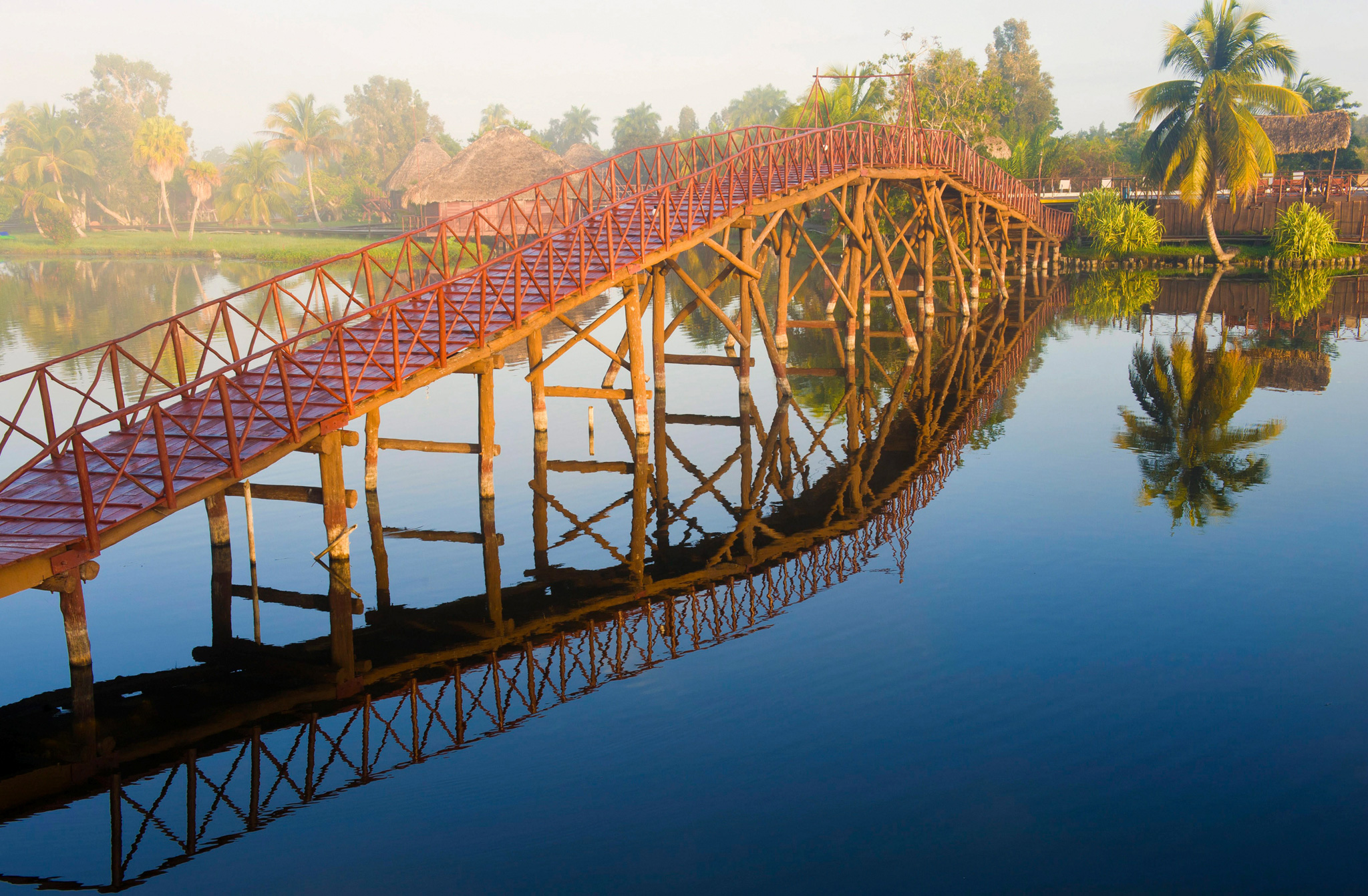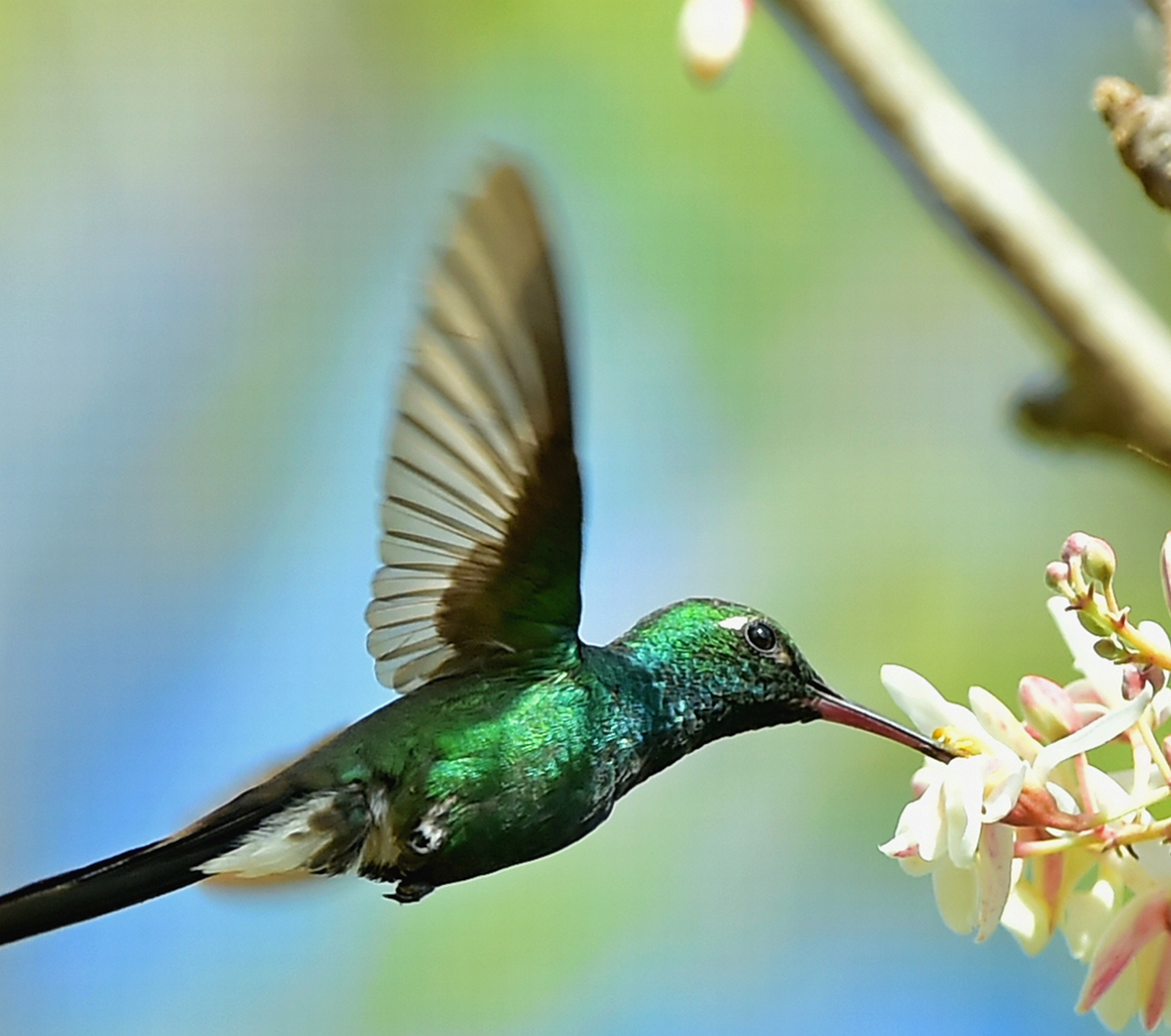Protected within a huge biosphere reserve, the Zapata Peninsula is covered in swampland and forests teeming with wildlife. The coast is lined with sandy beaches and coral reef, attracting scuba divers. Much of the population here works as carboneros, eking out a living making charcoal. The area is known for the Bahía de Cochinos (Bay of Pigs), site of the invasion.

NEED TO KNOW
 Laguna del Tesoro • 45 91 3224 • Boats depart Boca 8:30am–4pm daily
Laguna del Tesoro • 45 91 3224 • Boats depart Boca 8:30am–4pm daily  Parque Nacional Ciénaga de Zapata • 45 98 7249 • Adm: CUC$15 (including guide)
Parque Nacional Ciénaga de Zapata • 45 98 7249 • Adm: CUC$15 (including guide)  Crocodile Farm • 45 91 5666 • 7am– 7pm daily • Adm: CUC$5
Crocodile Farm • 45 91 5666 • 7am– 7pm daily • Adm: CUC$5  Caleta Buena • 45 91 5589 • 10am– 5pm daily • Adm: CUC$15
Caleta Buena • 45 91 5589 • 10am– 5pm daily • Adm: CUC$15  Cenote de los Peces • 9am–5pm daily
Cenote de los Peces • 9am–5pm daily  Museo Girón • 45 98 4122 • 9am–5pm daily • Adm: CUC$2; camera CUC$1; guide CUC$1
Museo Girón • 45 98 4122 • 9am–5pm daily • Adm: CUC$2; camera CUC$1; guide CUC$1 - The Colibrí restaurant at Boca de Guamá serves crocodile meat (its specialty), lobster, and excellent mojitos.
1.Laguna del Tesoro
Accessed via a 3-mile (5-km) canal, “Treasure Lake” is named for the gold that Taíno Indians supposedly hid in its waters when Spanish conquistadores arrived. Boat tours visit a recreated Taíno village on an island that also hosts a resort hotel.

Laguna del Tesoro
2.Birding
Eighteen of Cuba’s 22 endemic bird species (for further details see Animals and Birds) inhabit Zapata, including tocororo and zunzuncito. Flamingos tip-toe elegantly around Las Salinas lagoon, while sandhill cranes throng the reed beds.

Birding
3.Fishing
The saltwater shallows off southern Zapata teem with bonefish, while tarpon and manjuarí (alligator gar) inhabit the estuaries and tributaries of the Hatiguanico river.
4.Parque Nacional Ciénaga de Zapata
This vast wetland ecosystem can be explored on guided tours and boat trips. The mangroves, grasslands, and lagoons teem with wildlife.
5.Crocodile Farm
Visitors can photograph crocodiles from an observation point overlooking the Boca de Guamá, which is Cuba’s largest crocodile farm.

Crocodile Farm
6.Museo Girón
Housing military hardware, including tanks and a Cuban air force plane, this museum features items relating to the Bay of Pigs invasion and the three-day battle that followed.

Museo Girón
7.Central Australia
Castro’s headquarters during the Bay of Pigs invasion in 1961 was in the former administrative offices of the now-defunct Central Australia sugar mill. A steam train excursion operates from here into the countryside.
8.Caleta Buena
This splendid cove with coral-filled turquoise waters is perfect for snorkeling and scuba diving. White sands top the coral shoreline.

Caleta Buena
9.Cenote de los Peces
With peacock-blue waters, this exquisite natural pool is 33 ft (10 m) deep, and has a side tunnel that descends 230 ft (70 m). Named for the fish that swim in it, this is a popular spot for cave-diving enthusiasts.
10.Scuba Diving
Unspoiled coral reefs and a wall plunging 1,000 ft (305 m) lie close to the shore. Inland, cenotes – fresh water pit-caves – are suitable for experienced divers only.
LA VICTORIA
Trained by the CIA, the anti-Castro exiles who landed at the Bay of Pigs on April 17, 1961 intended to link up with counter-revolutionaries in the rugged Sierra del Escambray. The site was ill chosen, as the landing craft grounded on reefs. The invasion was finally doomed when President John F. Kennedy refused to authorize the US naval and air support.



